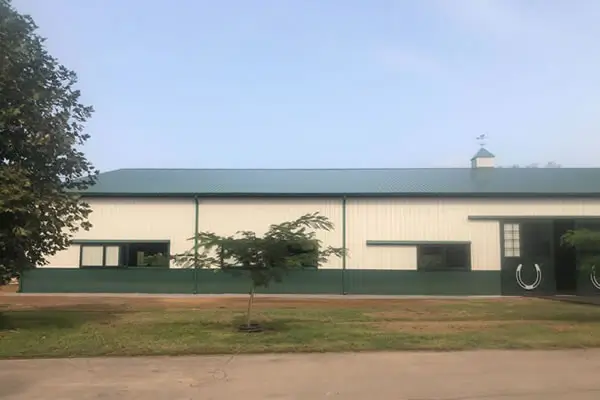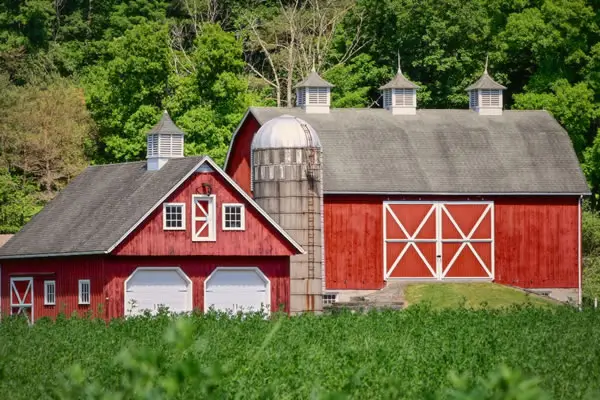Stables can be found throughout the state of Louisiana, serving various purposes such as housing horses for recreational riding, equestrian events, racing, breeding, and agricultural work. Louisiana’s diverse landscape, which includes rural areas, farmland, and suburban communities, provides suitable environments for the establishment of stables to meet the needs of horse owners and enthusiasts.
Stables in Louisiana may vary in size and amenities, ranging from small private facilities to larger commercial operations. They can be located on private farms, ranches, or equestrian centers, offering boarding services, training, riding lessons, and other equine-related activities.
In regions with a significant equestrian presence, such as around cities like Baton Rouge and New Orleans, there are likely to be numerous stables catering to the local horse-owning community. Additionally, Louisiana’s rich cultural heritage and history of horse breeding and racing contribute to the presence of stables across the state.
Why Install Lightning Protection System on a Stable?
Installing a lightning protection system on a stable, where horses or other livestock are housed, can be beneficial for several reasons:
- Animal safety: Lightning strikes can cause injury or death to animals housed in a stable. A lightning protection system helps to mitigate the risk of injury or fatalities by providing a safe path for the lightning strike to follow, thus reducing the likelihood of harm to the animals.
- Property protection: Stables often contain valuable equipment, such as horse tack, feed, and machinery. Lightning strikes can cause fires or damage to this equipment, leading to financial losses. Installing a lightning protection system can help safeguard the property and assets stored in the stable.
- Peace of mind for owners: Owners and caretakers of the animals housed in the stable can have peace of mind knowing that measures have been taken to protect both the animals and the property from the dangers of lightning strikes.
- Regulatory compliance: In some areas, building codes or insurance requirements may mandate the installation of lightning protection systems on certain types of structures, including stables. Compliance with these regulations may be necessary to operate the stable legally or to obtain insurance coverage.
- Liability reduction: By installing a lightning protection system, stable owners can demonstrate that they have taken reasonable steps to protect against potential hazards, thereby reducing their liability in the event of lightning-related incidents.
Overall, installing a lightning protection system on a stable helps to ensure the safety of the animals, protect property and assets, and provide peace of mind to owners and caretakers.


What happens if lightning strikes a stable?
If lightning strikes a stable, several potential outcomes could occur, depending on various factors such as the intensity of the strike, the construction materials of the stable, and the presence of lightning protection systems. Here are some possible scenarios:
- Fire: One of the most immediate risks of a lightning strike to a stable is the ignition of combustible materials, such as hay, straw, or wooden structures. If these materials are present in the stable, a lightning strike can start a fire that may rapidly spread and cause significant damage to the building and its contents.
- Structural Damage: Lightning strikes can cause structural damage to the stable itself, particularly if it is made of materials such as wood or metal that conduct electricity. The force of the lightning strike can lead to structural collapse or damage to walls, roofs, and support beams.
- Injury or Death to Animals: Animals housed in the stable are at risk of injury or death if they are directly struck by lightning or if they are affected by secondary effects such as fires, collapsing structures, or flying debris.
- Electrical Damage: Lightning strikes can induce power surges in electrical systems, potentially damaging electrical equipment and causing disruptions to lighting, heating, ventilation, and other systems in the stable.
- Water Contamination: If lightning strikes a stable with plumbing or water supply systems, it can damage pipes and contaminate water sources, posing a risk to both humans and animals.
- Loss of Equipment and Supplies: Lightning strikes can destroy or damage equipment, supplies, and stored feed within the stable, leading to financial losses for the stable owner or operator.
Stables Lightning Protection System Mitigates Risk Associated with Lightning
To mitigate the risks associated with lightning strikes, stables can implement various safety measures, including:
- Installing lightning protection systems, such as lightning rods and grounding systems, to divert lightning strikes away from the stable and safely dissipate electrical energy.
- Using fire-resistant construction materials and minimizing the presence of combustible materials within the stable.
- Implementing emergency response plans and evacuation procedures to ensure the safety of humans and animals in the event of a lightning strike or fire.
- Regularly inspecting and maintaining electrical systems, lightning protection equipment, and structural integrity to identify and address potential hazards.
- Educating staff, visitors, and animal owners about lightning safety practices and procedures.
Standards for Installing Lightning Protection Systems for Stables
When installing lightning protection for stables, it’s crucial to adhere to relevant safety standards to ensure the protection of both the animals and the structure itself. Here are some standards and guidelines to consider:
- NFPA 780: The National Fire Protection Association (NFPA) 780 standard provides guidelines for the installation of lightning protection systems. It covers the design, installation, maintenance, and inspection of these systems. This standard is widely recognized and followed for lightning protection installations.
- Local Building Codes: Ensure compliance with local building codes and regulations, as they may include specific requirements for lightning protection systems in agricultural structures like stables. These codes may vary by region or country.
- Manufacturer Guidelines: Follow the recommendations and guidelines provided by the manufacturers of lightning protection system components, such as lightning rods, conductors, and grounding systems. This ensures proper installation and performance of the system.
- Consultation with Experts: If in doubt, consult with lightning protection system specialists or professional engineers experienced in designing and installing such systems. They can provide tailored recommendations based on the specific characteristics of the stable and its surroundings.
- Risk Assessment: Conduct a thorough risk assessment to determine the level of protection required for the stable. Factors to consider include the location, size, construction materials, and proximity to trees or other tall structures that could increase the risk of lightning strikes.
- Grounding: Proper grounding is essential for the effectiveness of a lightning protection system. Follow the guidelines for grounding provided by relevant standards and ensure that the grounding system has low impedance to dissipate the lightning’s energy safely into the ground.
- Regular Inspection and Maintenance: Once installed, regularly inspect and maintain the lightning protection system to ensure its continued effectiveness. This includes checking for damage, corrosion, and ensuring that connections are secure.
By following these standards and guidelines, you can install a reliable lightning protection system for stables that helps mitigate the risk of damage or injury caused by lightning strikes.
Florida based lightning protection company Coastal Lightning Rods offers design, installation, test and maintenance of lightning and surge protection and earthing systems. We ensure you that our installation of a lightning protection system on your property will be of the highest standard. We provide lightning protection services throughout the state of Florida, entire South East, Gulf Coast and Atlantic Coast. We also provide lightning protection in Alabama, South Carolina, Louisiana, Florida, Mississippi, Tennessee and beyond.
